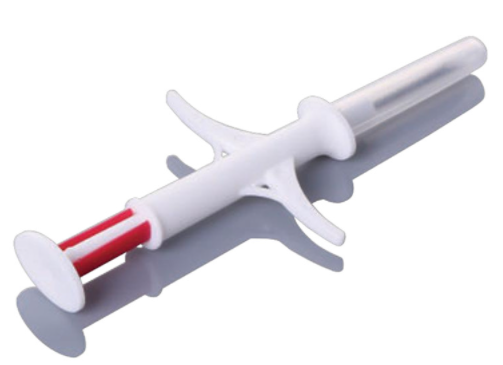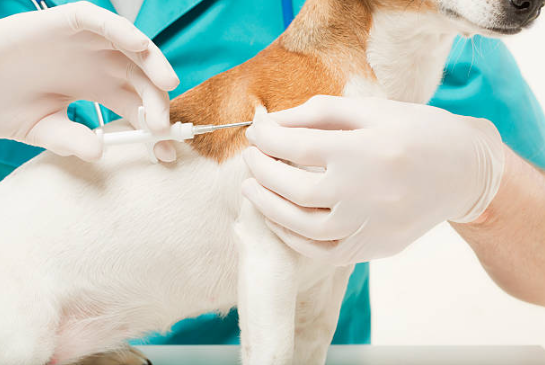Animal ID Microchips: Keep Your Pet Safe
Aug. 24, 2022
The scariest news a pet owner can hear is that their dog or cat is lost. Whether the gardener left the gate open, a child didn't close the door all the way, or your pet escaped from a friend's house while you were vacationing, the misfortune sends a shock to your system and creates a stressful situation that can end in tragedy.
According to American Humane, 10 million pets go missing in the United States every year.1 Unfortunately, pets that end up in shelters without identification are unlikely to reunite with their owners. Just 15 percent of dogs and 2 percent of cats without ID tags or microchips are found by their owners.In this article, we'll discuss the importance of microchipping your pets and making sure they wear ID tags.
Debunking Common Pet ID Tag Myths & Mistakes
The internet is filled with countless sad stories of missing pets and many contain explanations from the owners as to why their pets disappeared. Here are some of the most common explanations:
Explanation #1: “I've had animals all my life and none have ever gotten out.”
Reality: No one plans for their pet to get loose. Unfortunately, unexpected things happen which is why pet insurance is invaluable.
Explanation #2: “I don't like the noise the tag makes.”
Reality: There are noiseless plastic tags, tag pouches, engraved plates that adhere to the collar rather than dangle, and even personalized collars that can stitch your contact number right onto the fabric.
Explanation #3: “I had just given my pet a bath that day.”
Rebuttal: Put the collar right back on after the bath. Don't wait! Make it part of your routine.
Explanation #4: “My pet has a microchip.”
Reality: Microchips are an excellent way to keep track of your pet. However, the animal needs to be taken to a shelter or vet's office where there is a scanner. What if the person who finds your lost pet doesn't think to have it scanned for a chip? Make it easy for any Good Samaritan who stops to help your animal by having an ID tag with your current contact information.
>> Shop for animal ID microchips here
ID Tags Keep New Pets Safe
Whenever you adopt a new pet, make sure to put a collar and tag on the animal before stepping outside the building. The reason for doing this is new environments and new people can be stressful for a pet. Remember, you don't yet have a relationship with a dog or a cat that is new to the family. The animal doesn't know to come when you call them. If they get out of your yard, they are not familiar with the area. Don't wait to get a tag – have it ready before the animal comes home.
We recommend lightweight plastic tags that enable you to print information on both sides. This type of tag is quiet, comes in bright, eye-catching colors, and won't get scratched or worn like some metal tags. We also suggest putting your pet's name, address, and at least two phone numbers on the tag. Also, the word “REWARD” might give someone who finds your pet more of an incentive to return them to you. “Scan me for a chip” lets people know your animal is also microchipped. This can serve as useful information for the person who finds your pet, as knowing what to do when you find a lost pet isn't always apparent. If you move or change your phone number, be sure to update your pet's tag. It doesn't do much good if the contact information is not current.
When and Where Your Pet Should Wear a Collar
Your pet should wear a collar and ID tag most times of the day. An exception to this is when your pet is in a kennel, as the tag can get caught. Avoid this hazard by removing your pet's collar before they enter their kennel. For cat owners, make sure your kitty has a breakaway collar. This will ensure that if your cat disappears and gets caught in a tree or in a similar predicament, the collar will unsnap or unclick if it's pulled on with force.
People sometimes say they don't like to have a dog or cat's collar on in their home. In the animal kingdom, when scary things happen, flight is often an animal's first response. In the case of an emergency such as a fire or earthquake, your pet could bolt or get loose in the ensuing confusion. If your pet ends up at a city shelter, you may have to pay impound fees to recover your pet. The time spent in a shelter can be extremely frightening for a lost animal. An ID tag prevents you and your pet from having to go through this ordeal. Identification tags are the cheapest and easiest way to bring your pet back home quickly and safely.
Why Every Pet Needs to Be Microchipped
If your pet's collar falls off or gets lost, his pet tags become useless. That's why microchipping is imperative as a reliable and permanent means of identifying your pet. A microchip is a small capsule about the size of a large grain of rice that is inserted under the skin near the shoulder blades. When scanned with a special device that nearly all veterinary clinics and shelters have, it provides an identification number that can be traced back to the owner through the microchip company. As with ID tags, if your contact information is not kept up-to-date it will make reaching you more difficult.
When used in combination, microchips and ID tags are the best solutions for keeping your pet safe if they become lost. If you haven't already done so, take care of these simple measures today to prevent a tragedy that can cause you unnecessary guilt and pain. We are an Animal ID Microchips supplier. Please feel free to contact us if you need them!








